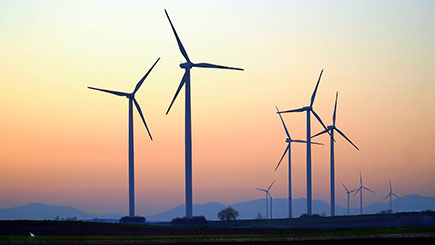Sensors and Networks Research
Controller design for wind turbine systems
What’s Involved in This Research?

As the wind turbine system becomes more complex, the necessity of designing an optimal controller and detecting system failure as early as possible is increasing.
Using modern control techniques, a well-adapted optimal controller is designed for a complex system. Due to system complexity, it is critical to detect any sensor/actuator faults as early as possible.
Thus, a fault detection system should be well designed to prevent disaster.
How Students Benefit
Students will learn how the controller is used within a system for better performance with the capability of detecting any system fault to prevent disaster. They will model wind turbine systems in order to understand what is needed in a controller.
Students will then design multiple controllers and determine which provides optimum performance and fault detection with testing.
Undergraduate students can enroll in the Directed Research course (ENGR 495) to participate in this project.
Research Professor

Dr. Young-Man Kim
B.S., M.S., Ph.D.
Associate Professor of Electrical Engineering
Google Scholar Profile
Impact on Society
Better controllers on wind turbine systems will create more efficient energy-saving systems. Controllers that can detect faults sooner enhance safety for workers and consumers.
Articles
Y.-M. Kim, “Robust Fault Detection of Piecewise Affine ARX Systems,” J. Control and Decision, DOI: 10.1080/23307706.2018.1563511, 2019.
Y.-M. Kim, “Robust Data Driven H-infinity Control for Wind Turbine,” J. Franklin Institute, Vol. 353, Issue 13, pp. 3104-3117, 2016.